May 2022
The stories of our coasts and ocean cover many topics and include many cultures. There is little-known of Asian fishing history along California's long shoreline, running through the waters of our national marine sanctuaries and far beyond.
When cultural resource specialist and curator John Muir started his career with San Francisco Maritime National Historic Park more than 30 years ago, he wasn’t planning on building a replica of a Chinese shrimp junk. Thirty to 40 of these vessels were in operation at the height of the fishery in the late 19th century, a multimillion-dollar business. While he was interested in the San Francisco Bay Chinese shrimp fishery and the archaeology of the Chinese fishing boats that were built there, it wasn’t until he stumbled upon a special photo while doing research in the archives of the park that sparked his imagination.
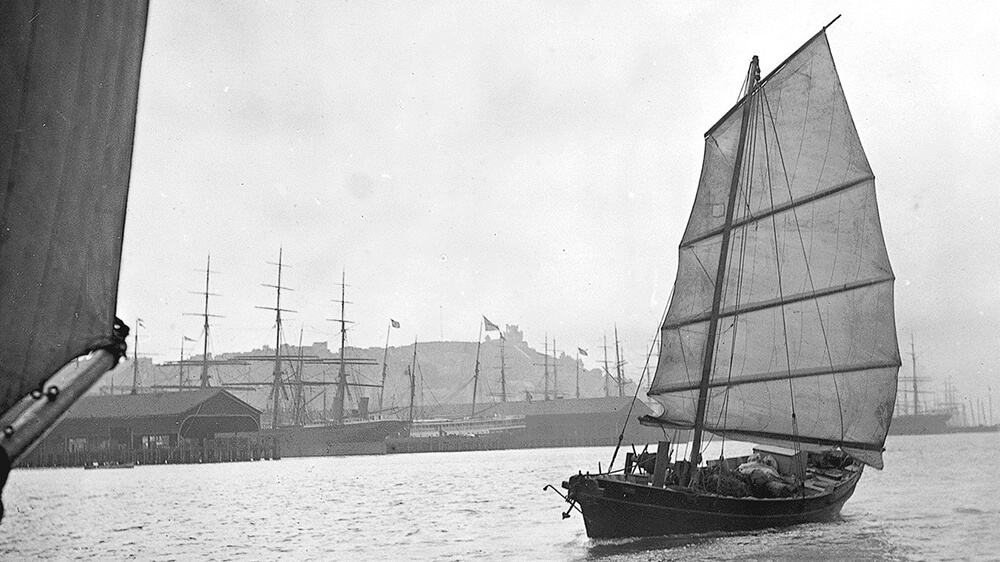
“Back then I was doing a survey of our archives at San Francisco Maritime National Historic Park, looking through all the historic photographs,” he describes. “Often, the history of smaller watercraft and fishing vessels is not well understood or well cataloged, sometimes the images of those watercraft just occupying the perimeters of photographs of larger ships. But those photographic archives hold a lot of jewels of the waterfront! I came across a stunning image of a Chinese shrimp junk sailing in the middle of the Bay with Angel Island or Alcatraz in the background. The boat seemed to emerge from another world. I was just stunned, a very different vessel from anything I’ve seen before, seeing it back in that day in a familiar setting, you know. And then there was just the pure beauty of the vessel itself, the type of sail…it was unbelievable to me.”
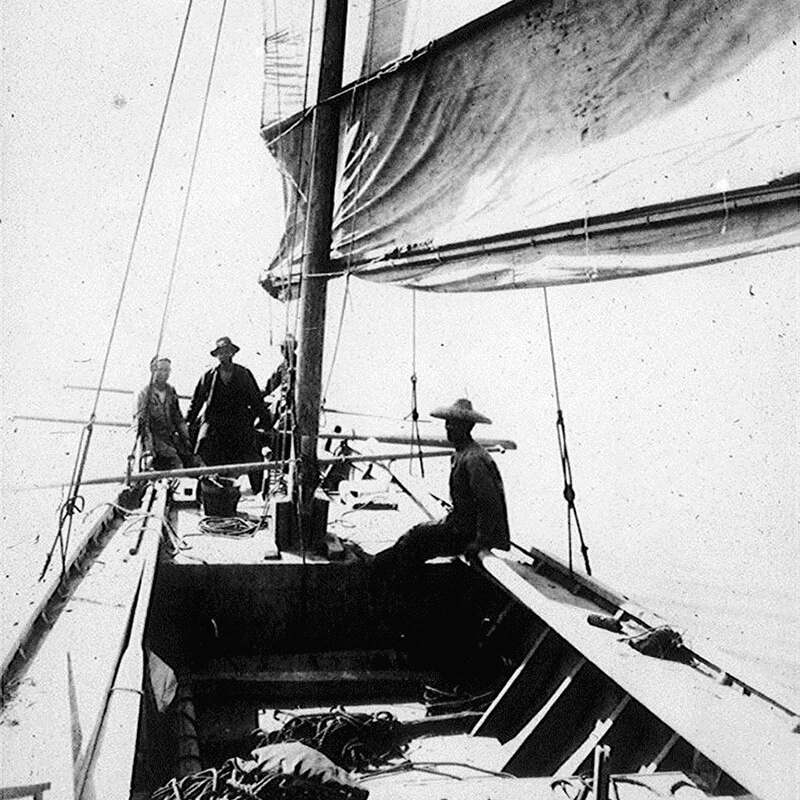
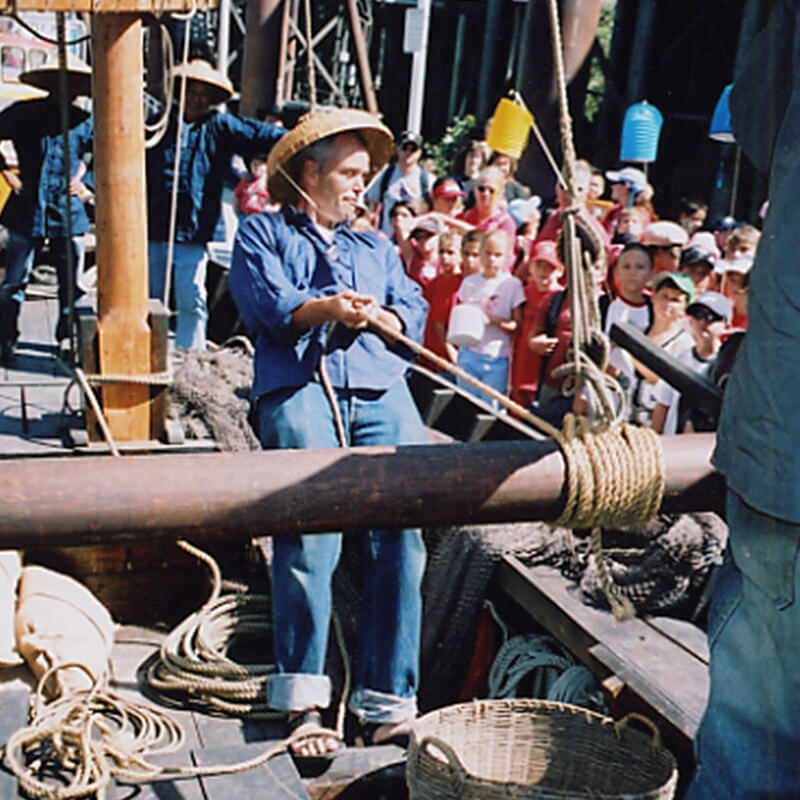
As a sailor and angler himself, John had a deep appreciation for both the craftsmanship of the vessel and the skill of the fishermen on board: “There is an attachment or a kind of brotherhood of the sea that made it easier to ‘know’ these fellows. We’re fishing and sailing in the very same waters they had been in, more than 100 years ago, and that made me more curious about their story. For me, that’s the kind of discovery and imagery that touches my sailor side, and my boatbuilding side, and I found the idea of actually sailing this very different craft from another side of the world fascinating.”
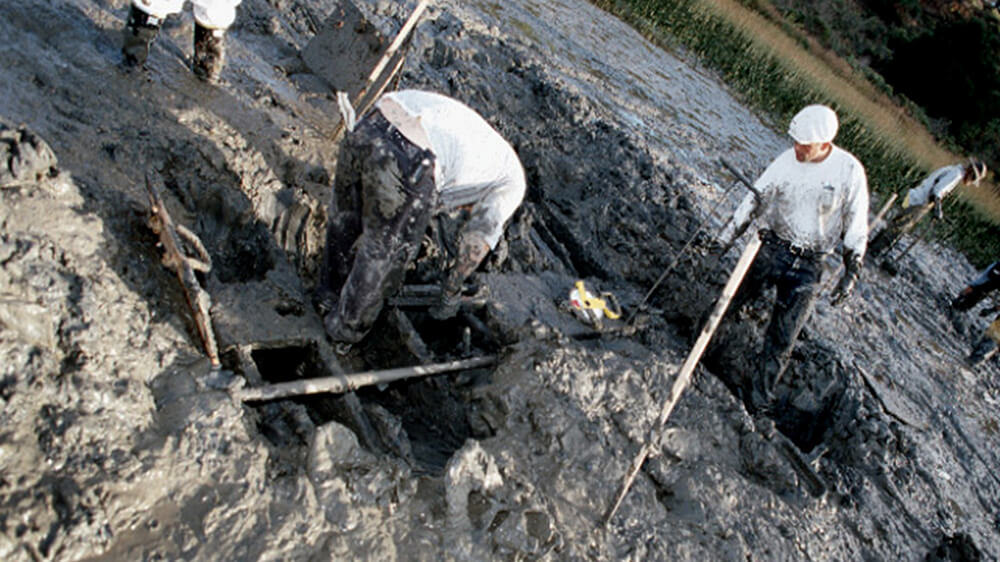
As he was contemplating the subject for his master’s thesis, he met Frank Quan, a descendant of some of the original Chinese fishermen and their families who first settled China Camp (once the site of one of the largest of the historic Chinese shrimp fishing villages in San Rafael and now China Camp State Park) and himself one of the last shrimpers of Chinese descent in the Bay Area. Frank helped John decide to study the junks and jump-started the idea of building a replica, an idea that took root during a hike together. John explains, “I remember he and I went out tromping through the mud. With a little probing from the surface, we were able to discern the outlines of a junk. And it dawned on me that here was a very central piece of San Francisco Bay history and the history of our fisheries. Here was the opportunity to actually uncover the remains of one, for there were none remaining, no artifacts left at all. I had a rare opportunity to piece together the historic photographs and the archaeological information, and ultimately to use this history to create a replica of a San Francisco Bay shrimp junk.”
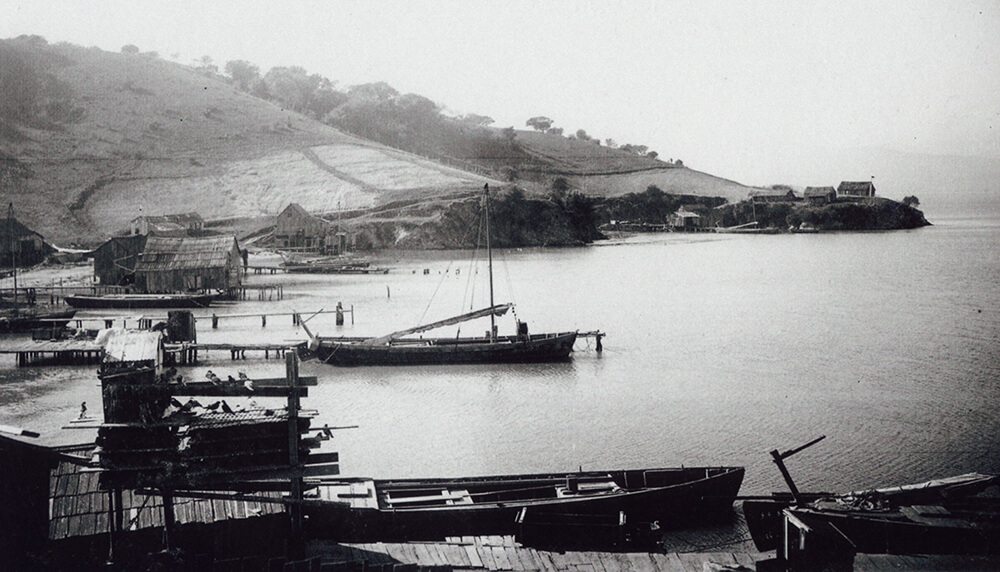
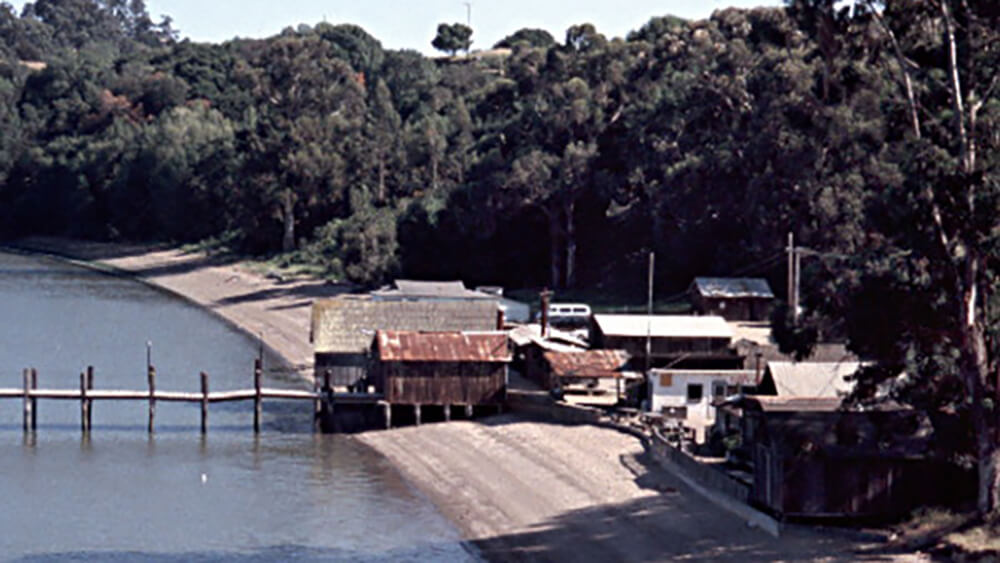
After taking a couple years to convince the park to undertake the project, John was first asked to build a replica of a smaller fishing vessel, the sampan, which is also of Chinese origin. Taking a corner of the boat shop at the park, he set to work in 1993 and completed the sampan, which now resides at a museum at China Camp State Park. While he learned much from the effort, John knew he needed to learn more before he began the larger and more complicated task of building the replica of the shrimp junk. Those techniques, he realized, had to come from the artisans who still build those kinds of vessels.
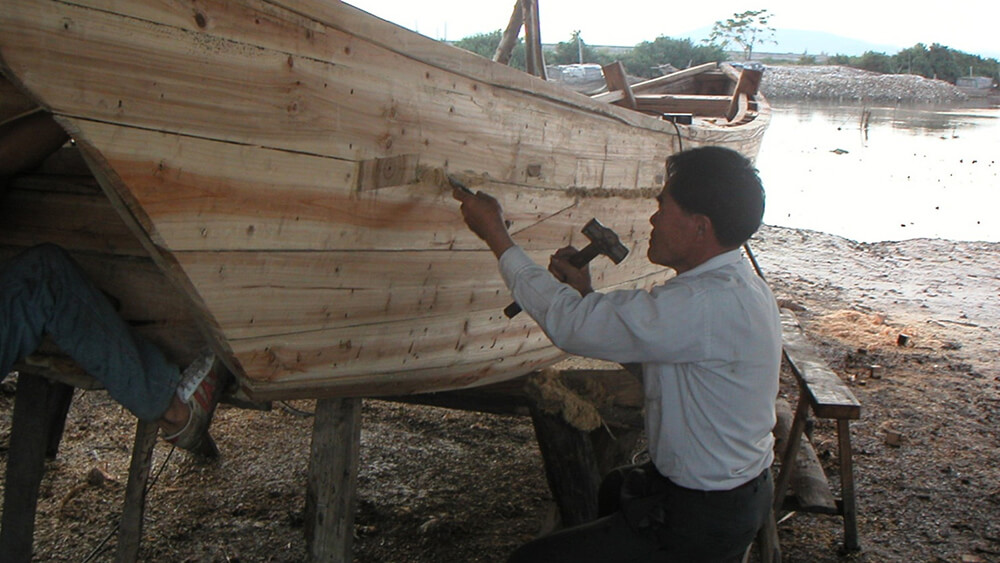
“Like most fishermen, including the Italian fishermen who emigrated to the Bay Area, the Chinese Bay shrimpers built what they knew from their homeland,” he explains. “So, for the shrimp junk, we had to investigate the Asian methods of edge nailing and fire bending, building techniques we had never used, very real expressions of Asian heritage. I wanted to get that right. So, I went and tramped around the Chinese boatyards in the Pearl River delta and met the old shrimp fishermen, and (though they were now motorized, not sail) they were still wooden vessels similar to shrimp junks using traditional techniques. This was in the region of Taishan City in Guangdong Province. Traditional methods of edge nailing and fire bending were still in full effect, a complete expression of maritime culture. Even today, Chinese shipbuilders remain masters of edge-joined nailing…cutting out these little notches along the edges of the planks and drilling down and hammering forged nails for building large wooden trawlers. We got a real good sense of these traditional techniques, and used them in the construction of Grace Quan.”
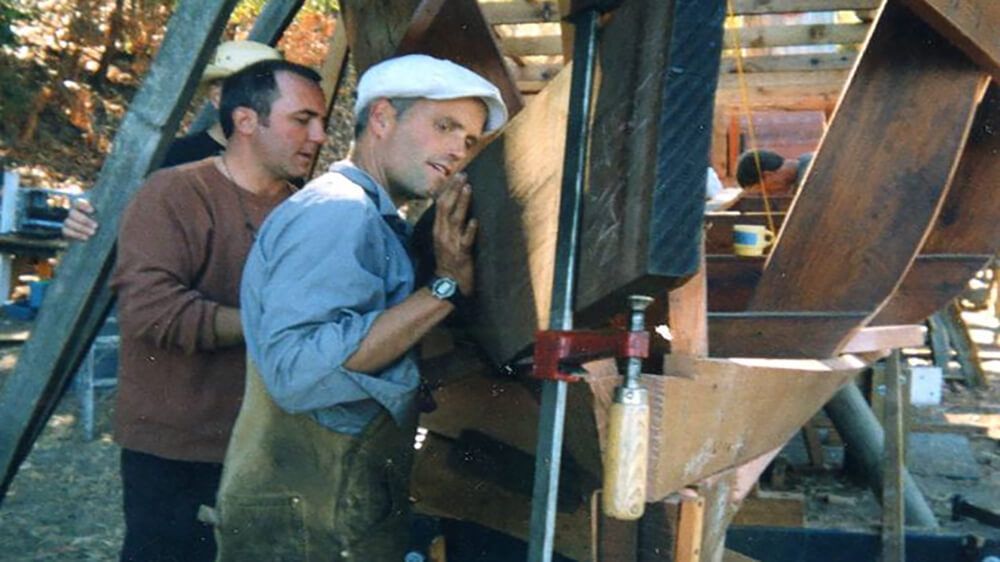
More than five years after the idea first occurred to John and his mentor Frank Quan, armed with the knowledge gained from in-depth research and experience, John and a team of park volunteers and staff got to work on the replica junk at China Camp State Park. The keel was laid in late April 2003. The team spent the summer using both traditional materials (such as redwood planking, forged nails, and caulking made from lime and linseed oil) and traditional boat-building techniques (such as bending wood with fire, and nailing planks to each other along the plank seams). Even the canvas sail was treated in a traditional manner of boiling in water infused with crushed bark from tanbark oak trees. By summer’s end, the team completed the construction of the 42-foot-long and 10-foot-wide replica. Grace Quan, named for Frank’s late mother Grace, was launched on Oct. 25, 2003.
Since its completion, Grace Quan has become an important interpretive and educational asset for San Francisco Maritime National Historic Park, one that John is clearly proud of. “We’ve been able to take some people on board Grace Quan and document the vessel underway, and tour the Bay Area with Grace Quan, visiting some of the old historic shrimping grounds, which are long since forgotten and overbuilt—but there are still pockets here and there. And we’ve brought children on to the junk at dockside and had them hoist the sail or learn to haul on the nets, and to feel the presence of the past, how the vessel was worked,” he says. “We try to spark people’s imaginations by promoting a three-dimensional experience, in what is now a very two-dimensional or ‘screen’ world. Experiencing the past in three dimensions has always been a great thing for me. Building replicas and engaging people on board replicas is one great way to really light up people’s imaginations. It is a way to carry the story forward. That’s why this seemed like such a great opportunity.”
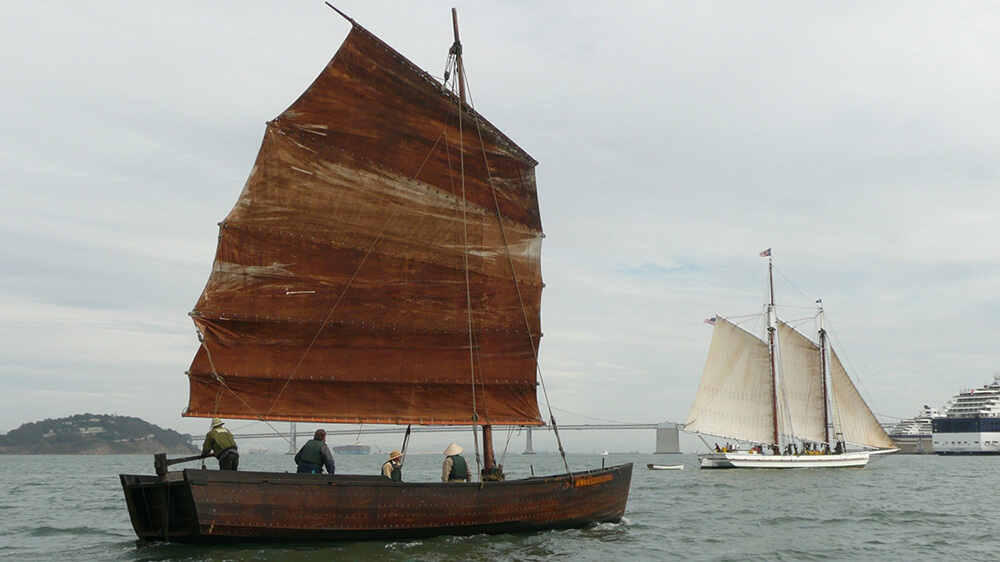
When asked why Americans should care about this chapter of Asian and American maritime history, John answers decisively: “Because it tells the story of who we are”.
Maritime history is very diverse by nature. The history of ports and sea towns is filled with all sorts of different sailors coming in. The Bay Area in the late 19th century wasn’t heavily populated by today’s standards, but was incredibly diverse for the population, particularly in the fishing industry, which could be quite contentious.
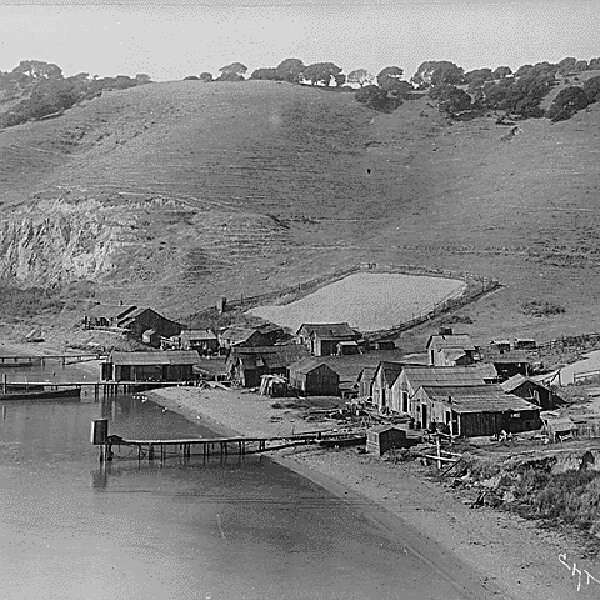
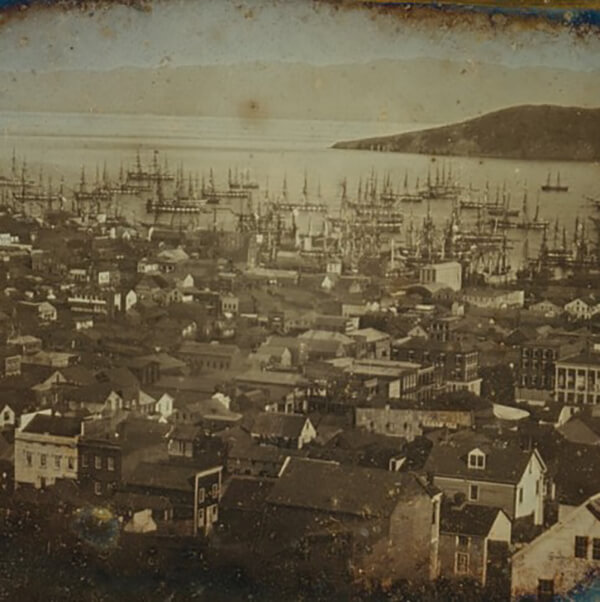
“There really was a landscape of legal controversy associated with the story of Chinese immigration and bay fishing. The contrast and interplay of different fishing techniques and the fish different communities were targeting is part of the American effort to balance the use of resources and to find a way to coexist together. The story of Chinese fisheries in the bay is one filled with litigation and prohibitions, and real clashes over valuable resources. And successes are just as much a part of that story as failures,” John continues. “Given our current climate of anti-immigrant rhetoric, it’s all that much more important to understand where we come from and who we are as Americans. There was real resilience in Chinatown during these difficult periods, and resilience among the fishermen at the camps as well. It is a story that Grace Quan on the bay keeps alive.”
John Muir is a cultural resource specialist and curator for San Francisco Maritime National Historic Park
Hans Van Tilburg (李漢光) is the maritime heritage coordinator for NOAA’s Office of National Marine Sanctuaries’ Pacific Islands Region
Elizabeth Moore is a senior policy advisor at NOAA’s Office of National Marine Sanctuaries

